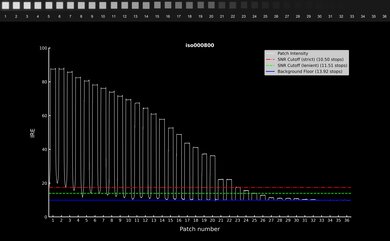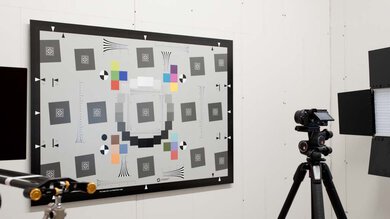
Websites like Etsy and Shopify have made it easier than ever to start an online store, and while professional product photographers often need powerful cameras with incredibly high-resolution sensors, a little can go a long way if you just need to get clear, presentable photos of whatever you happen to be selling. The specific camera you use will matter much less than how you present and light your products. Good lighting is probably the number one factor not just in getting good product photos but in photography more generally. With the right lighting and background, you can even get away with just using your smartphone.
That said, if you're an independent seller looking to step up your product photography game, you can find our top camera recommendations for amateur product photographers below. We've bought and tested over 110 cameras, and we've narrowed down the best cameras for product photography for different budgets and experience levels. If you're a total beginner, you can also see our recommendations for the best beginner cameras. Those interested in pursuing photography further can also look at our picks for the best cameras for photography more broadly. Finally, the best blogging cameras we've tested might also serve you well as an independent online shop owner.
-
Best Camera For Product Photography
Travel Photography7.7Landscape Photography8.4Sport & Wildlife Photography8.3Vlogging7.8Studio Video9.3Action Video5.8Performance Usages: Raw Photo8.5The Sony α7 IV is the best camera for product photography that we've tested and one of the best all-around options for both pros and hobbyists. Its 33-megapixel full-frame sensor can capture incredibly detailed images, and it's a well-rounded camera for those interested in shooting some video on the side. While a fast autofocus system isn't necessary for product photography the same way it is for sports or wildlife photography, this camera has a fool-proof AF system that can reliably nail focus on static objects, so you don't even have to think about it. To top it off, Sony's E mount system includes a wide range of both native and third-party lens options.
Having said all that, this high-end camera is probably overkill for most amateurs and shop owners. If you don't need advanced video capability or haven't had much experience with photography, the camera's many features and extensive controls will likely feel daunting. If that sounds like you, check out our other top picks below.
-
Best Upper Mid-Range Camera For Product Photography
Travel Photography8.2Landscape Photography8.1Sport & Wildlife Photography8.3Vlogging7.5Studio Video8.9Action Video6.9Performance Usages: Raw Photo8.1If you and your wallet aren't ready to dive into a high-end full-frame camera like the Sony α7 IV, the Fujifilm X-T5 offers a great mix of features and performance at a slightly lower price point. That's partly due to its smaller APS-C sensor, but don't be fooled—this camera can still capture stunning images. In fact, with a whopping 40.2 megapixels, it has the highest-resolution APS-C sensor on the market, meaning you'll get incredibly crisp and detailed images, with some leeway to crop in your images if needed.
That aside, this is a photographer's camera through and through, with an old-school design that includes dedicated exposure control dials and a portable body. Plus, if you're the kind of person who prefers not to fuss around with images after the fact, the camera's pre-set film simulation profiles can help you get storefront-ready photos straight out of the camera. That said, the X-T5's ergonomics and manual exposure dials can take some getting used to and are aimed at those who already know their way around camera settings.
-
Best Mid-Range Camera For Product Photography
Travel Photography7.5Landscape Photography8.1Sport & Wildlife Photography7.3Vlogging6.1Studio Video7.8Action Video4.1Performance Usages: Raw Photo8.4The Nikon Z 5 offers incredible value for all kinds of product photographers. It's a fantastic entry-level full-frame camera, especially if you're primarily interested in photography. Though it doesn't have as much resolution as the Sony α7 IV or the Fujifilm X-T5, its full-frame sensor can capture high-quality images and performs well in trickier lighting, making it a good choice for those working with natural light. It also includes in-body image stabilization (IBIS), which can help you get steady shots at slower shutter speeds if you don't have bright product lighting.
This is definitely a steal of a camera body for amateur photographers, but it's worth noting that the cost of full-frame lenses can quickly add up, and they're typically a bit bigger and heavier than crop sensor alternatives like you'll get for the X-T5 above. That said, Nikon's Z series lenses are of excellent quality, particularly in the premium S Line. Ultimately, if you're looking for a full-frame camera for product photography, the Z 5 offers a ton of value for its price.
-
Best Entry-Level Camera For Product Photography
Travel Photography8.2Landscape Photography8.1Sport & Wildlife Photography7.5Vlogging7.4Studio Video7.5Action Video5.6Performance Usages: Raw Photo7.9While our picks above are all great enthusiast-level cameras, the Sony α6400 is a well-rounded entry-level model that's a great fit for anyone who's just starting out. Though it doesn't have IBIS like the cameras mentioned above, that won't matter too much if you have decent lighting, a tripod so you can slow down your shutter speed, or a lens with a wider aperture. Beyond that, it has an excellent APS-C sensor that captures sharp, detailed images.
Though it uses Sony's older, less intuitive menu system and has somewhat cramped ergonomics, it benefits from the company's extensive lens selection. Sony's E mount has substantial third-party lens support, so there are a ton of options to try if the kit lens isn't cutting it. If you're more of a hybrid shooter and want to record some video on the side, or you simply prioritize ergonomics, the Canon EOS R10 is an excellent alternative with a better grip and more intuitive user interface, as well as slightly better video specs, though it's pricier and lens selection is more limited. For most people, the α6400 will be more than enough, and its lens selection and portability make it well worth considering.
-
Best Budget Camera For Product Photography
Travel Photography7.2Landscape Photography7.5Sport & Wildlife Photography6.7Raw Photo Performance7.3Vlogging7.4Studio Video7.0Action Video3.1The Canon EOS Rebel SL3/250D is a fantastic starter DSLR, but any older DSLR, new or used, will get the job done if you're on a tight budget. You can probably even get away with just using a modern-day smartphone. As mentioned above, the lighting and setup of your products will make the biggest difference in your product photography. Still, the SL3 has a lot to offer among budget options, with excellent ergonomics and great image quality straight out of the camera. It's also quite portable for a DSLR and has a much longer battery life than mirrorless alternatives.
Canon's EF/EF-S lens mount has a very wide lens selection, including more affordable options, so you can also easily upgrade to better lenses down the line as your skills grow. A budget mirrorless camera like the Canon EOS R50 is another good option, with more bells and whistles and better video features. However, it's a tad pricier, and lens options for the RF mount are still fairly limited. However, the best budget option is whatever is most accessible to you, whether it's a used older model or the smartphone in your back pocket.
-
Best Point-And-Shoot Camera For Product Photography
Travel Photography7.4Landscape Photography7.2Sport & Wildlife Photography7.3Vlogging7.9Studio Video7.0Action Video5.2Performance Usages: Raw Photo6.5If you prefer the simplicity and portability of a point-and-shoot camera, the Sony ZV-1 offers a ton of value. While this is primarily designed to be a vlogging camera, it's a relatively inexpensive compact option that works well as a simple stills camera. There's no viewfinder here and limited manual controls, but if you're just looking for a dedicated camera option to replace your smartphone, its largely touch-based controls will feel familiar.
Beyond that, its built-in lens is solid, with a fairly versatile 24-70mm equivalent focal length range and a decently wide f/1.8-2.8 max aperture. That gives you a bit of flexibility with framing your products and some leeway in dimmer lighting, though with a point-and-shoot like this, you'll still want to invest in some lights for the best presentation. Of course, the Sony ZV-1 II is out as well, but its image quality is comparable, so unless you need a wider-angle lens, the original ZV-1 is a better deal for most people.
Notable Mentions
- Fujifilm X-H2: The Fujifilm X-H2 is a high-end APS-C camera with the same 40-megapixel sensor found in the Fujifilm X-T5. However, it's more expensive and geared more towards hybrid shooters, so it's a bit overkill for product photography. See our review
- Nikon D3500: The Nikon D3500 is another great budget DSLR with a more extensive 'Guide' shooting mode that's perfect for beginners. However, it doesn't have as many bells and whistles as the Canon EOS Rebel SL3/250D, like an articulating screen or 4k video capability. It's also harder to find in stock, so you'd likely have to buy one used. See our review
- Nikon D850:
The Nikon D850 is one of the best DSLR cameras ever made. Its 45 MP full-frame sensor is fantastic for capturing sharp, finely detailed images, with an even higher resolution than the Sony α7 IV. This pro-grade model is likely overkill for most people, but if you need a tank-like camera with a long battery life and wide lens selection, it's a great alternative to the Sony.
See our review - Olympus OM-D E-M10 Mark IV: The Olympus OM-D E-M10 Mark IV is a great budget mirrorless camera. It's more portable than the Canon EOS Rebel SL3/250D and includes IBIS, which can help in low-light situations. However, it uses a smaller Micro Four Thirds sensor with a less intuitive user interface. See our review
Recent Updates
-
We replaced the Nikon D780 with the Nikon D850 as a Notable Mention, due to its excellent high-resolution sensor.
-
We replaced the Canon PowerShot G7 X Mark III with the Sony ZV-1 as the point-and-shoot pick because of the Canon's more limited availability and higher price.
-
Aug 09, 2024 : We brushed up some of the text throughout this article for better readability and checked that the picks were still relevant.
-
May 14, 2024 : We reviewed the camera recommendations, including their prices and availability, to ensure the article is still up to date and meeting user needs.
-
Feb 16, 2024 : Added mention of the Canon EOS R10 as a possible alternative to the Sony α6400.
All Reviews
Our recommendations above are what we think are currently the best cameras for product photography for most people, according to their needs. We factor in the price, feedback from our visitors, and availability (no cameras that are difficult to find or almost out of stock in the U.S.).
If you'd like to choose for yourself, here's the list of all our camera reviews. Be careful not to get caught up in the details. There is no single perfect camera. Personal taste, preference, and shooting habits will matter more in your selection.
Comments
Best Cameras For Product Photography: Main Discussion
What do you think of our picks? Let us know below.
Looking for a personalized buying recommendation from the RTINGS.com experts? Insiders have direct access to buying advice on our insider forum.
Update: We replaced the Nikon D780 with the Nikon D850 as a Notable Mention, due to its excellent high-resolution sensor.
What do you think of these changes? Let us know





































































